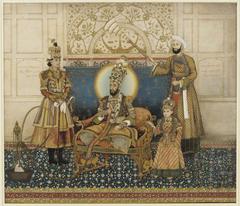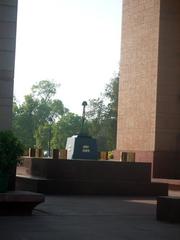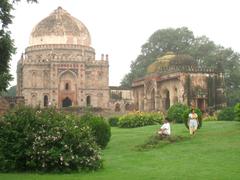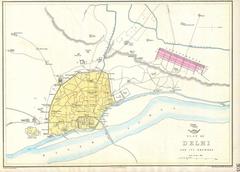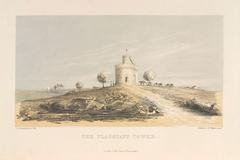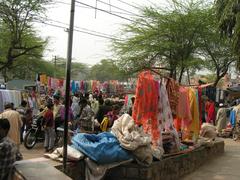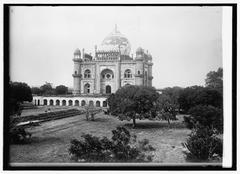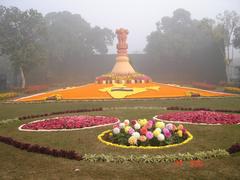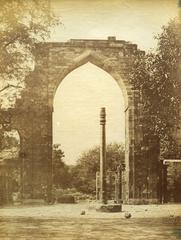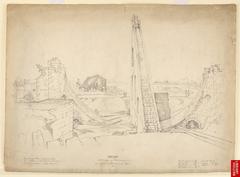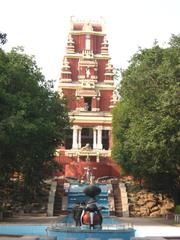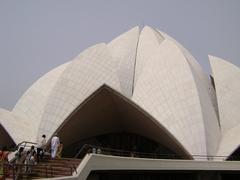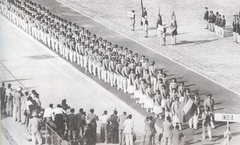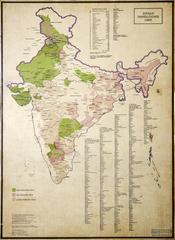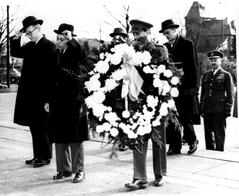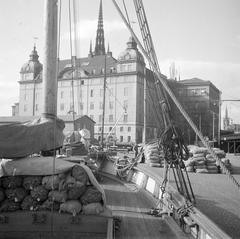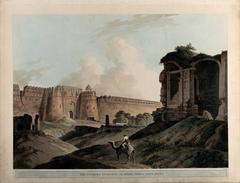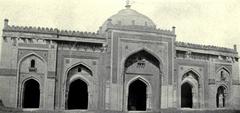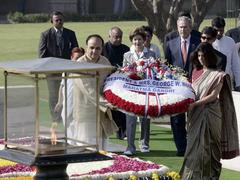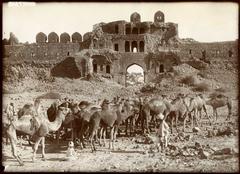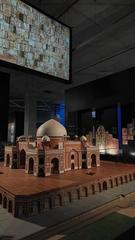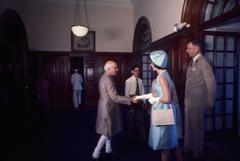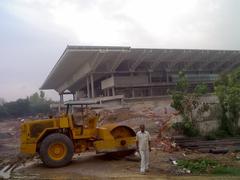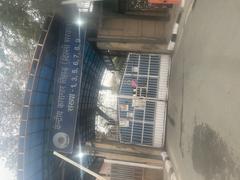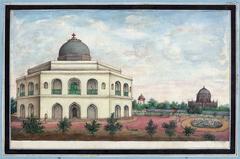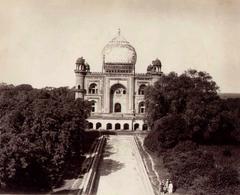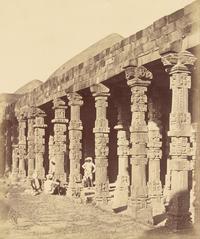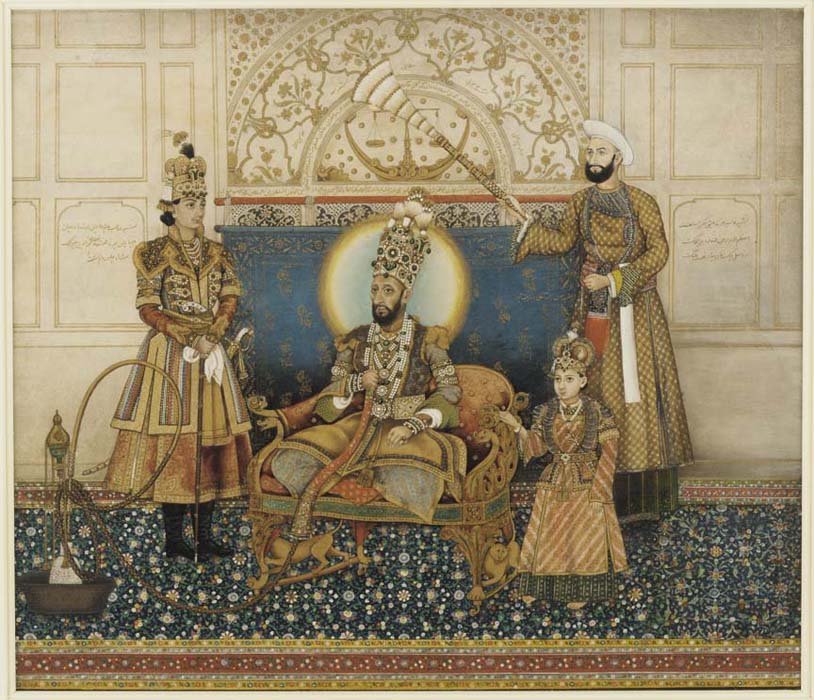
Visiting Hours, Tickets, and Historical Sites of Khas Mahal, New Delhi
Date: 25/07/2024
Introduction
The Khas Mahal, a stunning example of Mughal architecture, is located within the Red Fort complex in Delhi, India. Built during the reign of Emperor Shah Jahan, this palace served as the private residence of the emperor and his family, epitomizing the opulence and grandeur of the Mughal era. The Khas Mahal is divided into three main sections: the Chamber of Telling Beads (Tasbih-Khana), the Sleeping Chamber (Khwabgah), and the Wardrobe (Tosha-Khana) or Sitting Room (Baithak). The interior is adorned with carved white marble, colorful floral decorations, and partially gilded ceilings, reflecting the artistic richness of the Mughal period (YoMetro).
The palace features a striking tank facing fountains, open courtyards, and white marble pavilions, showcasing the intricate craftsmanship that defined Mughal architecture. Constructed between 1638 and 1648 at an expense of fifty lakh rupees, the Khas Mahal symbolizes Shah Jahan’s love for his daughters, Roshanara and Jahanara (OMAstrology). This guide provides comprehensive visitor information, historical insights, and travel tips to ensure a memorable experience for history enthusiasts and travelers alike.
Table of Contents
- Introduction
- Architectural Significance
- Historical Context
- Cultural and Artistic Elements
- Visitor Experience
- Preservation and Accessibility
- Frequently Asked Questions (FAQ)
- Conclusion
Architectural Significance
The Khas Mahal is divided into three main sections: the Chamber of Telling Beads (Tasbih-Khana), the Sleeping Chamber (Khwabgah), and the Wardrobe (Tosha-Khana) or Sitting Room (Baithak). The interior is adorned with carved white marble, colorful floral decorations, and partially gilded ceilings (YoMetro).
Reflecting the opulence of the Mughal period, the palace features a striking tank facing fountains, open courtyards, and white marble pavilions. The ceilings are richly decorated, and the compound includes elegantly engraved and sculpted brackets. The walls once held paintings of Mughal emperors, and iron loops on the ceiling were used to hold chandeliers. Red sandstone pavilions with white shell plastering and intricate gold work in the wall paintings complete the grand design (OMAstrology).
Historical Context
Constructed between 1638 and 1648, the Khas Mahal was built during the same period as the Red Fort, at an expense of fifty lakh rupees. It symbolizes Shah Jahan’s love for his daughters, Roshanara and Jahanara (OMAstrology).
The projecting tower to the east, the Octagonal Tower (Muthamman Burj), was where the emperor addressed his subjects every morning in a ceremony called Jharokha Darshan, symbolizing the emperor’s accessibility and benevolence (Wikipedia).
Cultural and Artistic Elements
The Khas Mahal’s interior showcases the artistic richness of the Mughal era. The Chamber of Telling Beads was used for personal worship, the Sleeping Chamber served as the emperor’s bedroom, and the Sitting Room or Wardrobe was for informal gatherings. The interior features floral motifs, white marble carvings, and partly gilded ceilings. A marble screen at the northernmost end features the scale of justice (Mizan-i-adal), an important Mughal art item (Wikipedia).
The nahr-i-bihisht (river of paradise), a cooling channel of water, flowed through the apartments to the adjacent Rang Mahal. This feature provided both a cooling effect and aesthetic beauty. The palace’s exterior was once lavishly painted, and an elegant lotus-shaped fountain adds to the grandeur (Lonely Planet).
Visitor Experience
The Khas Mahal is a must-visit for its historical and architectural significance. It is part of the Red Fort itinerary, a UNESCO World Heritage Site. The palace is open daily from 7 am to 10 pm, with an entry fee of Rs. 35 for Indians and Rs. 250 for foreigners. The best time to visit is during October, November, and December (YoMetro).
Visitors can reach the Khas Mahal easily by metro, with the nearest station being Chandni Chowk, a 9-minute walk away. The nearest railway station is Delhi, a 12-minute walk away, and the nearest bus stop is Red Fort, a 5-minute walk away (YoMetro).
Preservation and Accessibility
While the Khas Mahal is a significant historical monument, parts of it are not accessible to visitors. However, portions of the interior are visible from outside to preserve the delicate artwork and architecture (Lonely Planet).
Efforts to protect and restore the palace ensure that future generations can appreciate its beauty and historical importance. The Khas Mahal stands as a testament to the grandeur of the Mughal era and offers a glimpse into the opulent lifestyle and cultural richness of that time (OMAstrology).
Frequently Asked Questions (FAQ)
Q: What are the visiting hours for Khas Mahal?
A: Khas Mahal is open daily from 7 am to 10 pm.
Q: How much are the tickets for Khas Mahal?
A: The entry fee is Rs. 35 for Indians and Rs. 250 for foreigners.
Q: What is the best time to visit Khas Mahal?
A: The best time to visit is during October, November, and December when the weather is most pleasant.
Q: How can I reach Khas Mahal?
A: Visitors can reach Khas Mahal by metro, with Chandni Chowk station being a 9-minute walk away. The nearest railway station is Delhi, a 12-minute walk away, and the nearest bus stop is Red Fort, a 5-minute walk away.
Q: Are there any guided tours available?
A: Yes, guided tours are available and can provide more insights into the history and architecture of Khas Mahal.
Conclusion
The Khas Mahal is a remarkable example of Mughal architecture and a significant historical monument within the Red Fort complex. Its intricate design, cultural significance, and historical context make it a must-visit for anyone interested in India’s rich heritage. Whether you are a history buff, an architecture enthusiast, or a curious traveler, the Khas Mahal offers a unique and enriching experience that transports you back to the grandeur of the Mughal era. Plan your visit today and immerse yourself in the splendor of Mughal history.
For more detailed information and updates, visit the Incredible India website and follow us on social media.
References
- YoMetro. (n.d.). Khas Mahal, Delhi. https://yometro.com/travel-guide/attraction-khas-mahal-delhi
- OMAstrology. (n.d.). Khas Mahal, Red Fort. https://www.omastrology.com/indian-monuments/khas-mahal-red-fort/
- Lonely Planet. (n.d.). Khas Mahal. https://www.lonelyplanet.com/india/delhi/old-delhi-shahjahanabad/attractions/khas-mahal/a/poi-sig/1337802/1342596
- Thrilling Travel. (n.d.). Inside Agra Fort Guide. https://thrillingtravel.in/inside-agra-fort-guide.html
- The Travel Age. (n.d.). How to Visit the Taj Mahal: A Comprehensive Guide. https://thetravelage.com/how-to-visit-the-taj-mahal-a-comprehensive-guide/
- Archaeological Survey of India. (n.d.). https://asi.nic.in/
- Incredible India. (n.d.). Red Fort. https://www.incredibleindia.org/content/incredible-india-v2/en/destinations/delhi/red-fort.html
